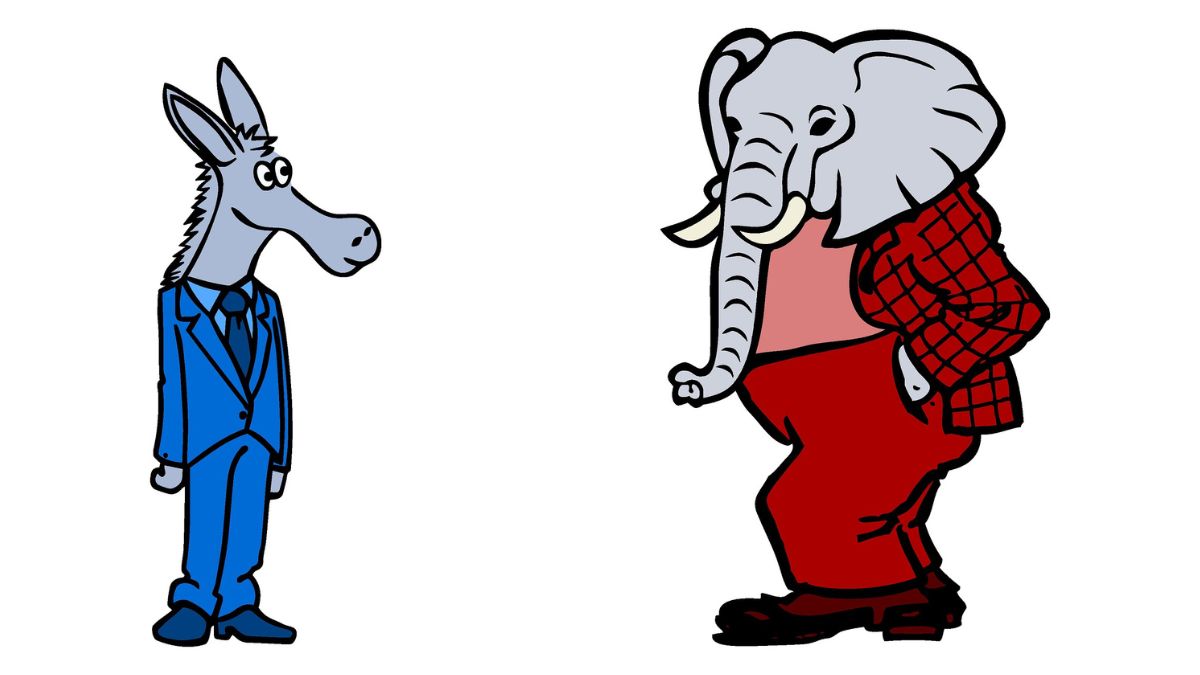Since the 19th century, the Democratic donkey and the Republican elephant have been enduring symbols in American politics, resurfacing every election cycle in cartoons, campaigns, and even on memes.
But how did these symbols come to represent the two major political parties, and why have they endured despite their seemingly mocking origins?
The answer lies in the work of one of America’s first great political cartoonists, Thomas Nast, whose biting satire and vivid imagination shaped these icons.
Origins of the Democratic Donkey
The Democratic Party’s association with the donkey dates back to Andrew Jackson’s 1828 presidential campaign. Nicknamed a “jackass” by his opponents, Jackson — a military hero and the first Democratic president — did not shy away from the label.
Instead, he embraced it, even featuring a donkey on his campaign posters. The image was simple but effective, portraying Jackson as a stubborn but determined man willing to carry the burdens of the common people.
The donkey gained new traction in the 1870s when Thomas Nast popularised it as a symbol of the entire Democratic Party through his illustrations for Harper’s Weekly. Nast’s sharp, critical cartoons helped cement the donkey as a symbol of the Democrats, characterising the party as obstinate yet resilient.
In one of his notable cartoons from 1879, Nast showed the donkey dangling precariously by its tail, on the brink of “financial chaos.” This caricature offered a critique of Democratic policies during the economically turbulent Gilded Age, a theme he would revisit in later works.
The Republican Elephant
The story of the Republican elephant’s origin is also connected to Nast’s artistry. While the elephant had appeared in Civil War-era imagery as a symbol of bravery in combat, it was Nast’s 1874 cartoon “Third Term Panic” that firmly linked the creature with the Republican Party.
In this cartoon, Nast mocked the New York Herald’s rumours that US President Ulysses S Grant was contemplating a third term, portraying the paper as a donkey wearing a lion’s skin and stirring up fear among the other animals.
Among these was an elephant labeled “the Republican Vote,” shown teetering at the edge of a pit, suggesting the party was at risk of following Grant blindly.
The cartoon’s impact was profound; the elephant was quickly adopted as the GOP’s emblem in subsequent political art. “Seeing the elephant” had already been a Civil War slang term for facing combat or significant challenges, so Nast’s use of the animal resonated with audiences.
Over time, the symbol’s initial suggestion of panic and instability faded, and the elephant came to signify the party’s strength, endurance, and loyalty.
Nast and his legacy
Beyond his political cartoons, Thomas Nast left an indelible mark on American culture. Known for his uncompromising satire, Nast was a fearless critic, using his art to expose corruption in figures like William “Boss” Tweed of Tammany Hall.
His 1871 cartoon of the Tammany Tiger tearing apart justice was a memorable attack on New York’s political machine, symbolising the ferocity with which Nast pursued what he saw as abuses of power.
Nast’s influence extended well beyond the realm of political satire. He is also credited with shaping the modern image of Santa Claus, transforming the traditional St Nicholas figure into the jolly, rotund Santa we recognise today.
How both parties have embraced these mascots
Although Nast’s work initially cast both parties’ symbols in a critical light — depicting the Democrats’ donkey as stubborn and the Republicans’ elephant as cumbersome and easily led — these icons have become cherished symbols for their respective parties.
Considering how poorly the two animals come across in Nast’s original cartoons, it is interesting to see that both of the major American political parties have embraced their mascots.
Indeed, Nast’s donkey and elephant now adorn pins, posters, and merchandise at rallies and conventions across the country, embodying the self-awareness with which both parties have come to celebrate their identities.
Even today, these animal symbols carry an implicit commentary on the traits associated with each party: resilience and steadfastness for Democrats, strength and reliability for Republicans.
Through his satire, Nast managed to create symbols that, while initially unflattering, came to be embraced by both sides.
Also Read: How did red and blue become synonymous with Republicans and Democrats?
With inputs from agencies
)